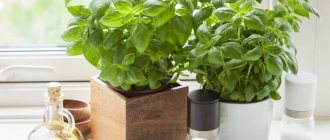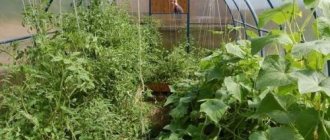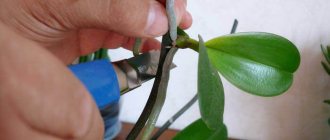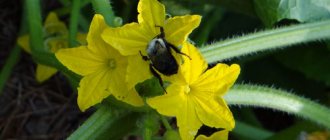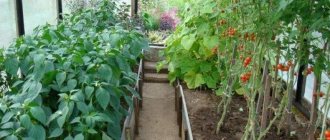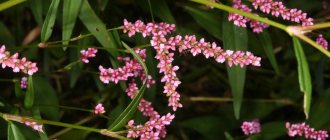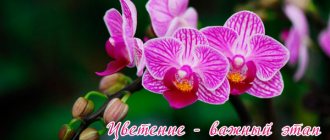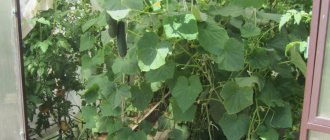Most of us choose our indoor plants for their flowering or chic decorative appearance. However, there are also flower growers who listen to folk signs and would never buy a flower that, according to superstition, brings trouble. Take peperomia, for example – a gorgeous plant with beautiful leaves. Is it possible to keep peperomia at home, what kind of culture is it, and what signs are associated with it?
What does Peperomia obtufolia look like?
Peperomia is a low herbaceous plant from the Pepper family. In nature, this flower lives in Central and South America, as well as in parts of Brazil and Ecuador.
The height of the plant, as a rule, does not exceed 40 cm. The structure of the shoots is thick, the leaves are round, 8 cm in diameter, dense, green, covered with an inconspicuous film. They are attached to the stem using petioles. The peduncles are spike-shaped, similar in shape to the peduncles of plantain.
Pereromia blooms almost imperceptibly, since its flowers are very small and inconspicuous.
The plant is mainly used as a hanging plant and grown on windows or balconies; it also looks good in hanging flowerpots.
There are several varieties of Peperomia obtufolia, their main differences being the color (solid dark green or variegated) and the shape of the leaves (oval, lanceolate).
Did you know? Because of the shape of the inflorescences, peperomia
is popularly called “rat tail”.
Similar plants
The secret of Peperomia's popularity among gardeners, both amateurs and professionals, lies in its original attractive appearance, thanks to which it stands out from other plants.
If you find an error, please select a piece of text and press Ctrl+Enter.
Peperomia is especially popular among gardeners for its unpretentiousness and varied shape. Its species can be shrubs, subshrubs or an ampelous flower.
Quite often, Peperomia is used in combination with other flowers, such as begonia, and it also has magical powers, numerous signs confirm this.
Beneficial properties and harm
- Peperomia obtufolia is known primarily for its beneficial properties:
- aesthetic - this is a small ornamental plant with bright foliage of unique colors;
- disinfectants - cleans the air in the room from fungi and microorganisms due to the release of phytoncides;
- medicinal - improves the functionality of the stomach and intestines, urinary system and mammary glands.
The flower has no harmful properties and does not pose a danger to humans, since it does not contain any poisons or toxins.
However, Peperomia obtufolia is also accompanied by some superstitions and folk signs. Some of them are probably related to the healing properties of the plant.
- If there is peperomia in the house, love and prosperity will reign in the family.
- By growing this flower, you will protect yourself from quarrels and have enough money.
- It should not be accepted as a gift, as it will bring grief to the family. But if you buy the flower with a coin, misfortune can be avoided.
- If you grow peperomia at home, family members will rarely get sick.
- In the house where this flower grows, loyalty will remain, all family members will be close to each other.
- Being in the same room with a plant, a sick person recovers faster.
- By placing peperomia in the bedroom, you can get a good, healthy sleep.
Is it possible to keep peperomia in the house: types of plants and signs associated with it
Most of us choose our indoor plants for their flowering or chic decorative appearance. However, there are also flower growers who listen to folk signs and would never buy a flower that, according to superstition, brings trouble. Take peperomia, for example – a gorgeous plant with beautiful leaves. Is it possible to keep peperomia at home, what kind of culture is it, and what signs are associated with it?
Conditions for growing at home
Growing peperomia does not require any special effort. Compliance with basic maintenance requirements will help maintain the attractive appearance of this plant. Let's take a closer look at how to properly care for it at home.
Lighting and ventilation
Peperomia needs moderate lighting, so it is best to place it in the northwestern or eastern part of the room. But in winter, the flower, on the contrary, needs stronger lighting, otherwise the leaves will lose color or even fall off.
The plant does not tolerate drafts and temperature changes well, so if you plan to ventilate the room in which the flowerpot is located, you need to move the peperomia to another room in advance.
Air temperature and humidity
Comfortable temperature for growing peperomia is +20…+24 °C. Heat of +30 °C and above is difficult for the plant to tolerate. In winter, the temperature can be reduced to +17...+18 °C, and if you reduce watering, the plant will be able to withstand temperatures up to +10 °C. If you need to increase or decrease the temperature in the room where the flower is kept, you should not do it suddenly.
Important! Too low a temperature leads to depletion of peperomia and its wilting. And too high a temperature can cause a sudden loss of leaves and death of the plant.
The flower requires frequent spraying if it is in a room with low humidity. The optimal humidity level for this plant should be 60–70%.
Why do you dream about a flower?
Fern: benefits and harm, signs and superstitions
Seeing cyperus in a dream is a good sign, so you definitely shouldn’t worry about it. This phenomenon predicts positive changes in your personal life, often the appearance of a person who can melt the ice and make your heart beat faster. This meaning is equally suitable for both a woman and a man - in both cases, the tsiperus hints to her or him about the imminent beginning of a happy love story.
But if in the dream there was not only the flower itself, but also people, then this has a slightly different meaning, not related to matters of the heart. Probably, some kind of solemn and mass event will soon take place - a birthday celebration or other occasion. At least, this is how the dream is interpreted, in which there are both cyperus and people.
Also, Cyperus may suddenly come to thoughts during a night's rest in the company of some animal - and this will also not be easy. Fortunately, again nothing bad is foreshadowed. Typically, such a dream indicates that a perhaps unexpected, but definitely pleasant friendly meeting will take place, which will evoke a warm feeling of nostalgia for distant past times.
Home care
Caring for peperomia at home is not difficult, since it is a fairly unpretentious plant. The main thing in growing a flower is to follow the regimes of moistening, feeding and replanting.
Bush plants also include Brugmansia, Zamia, Hypocyrta, and Hoffmania.
Watering
The plant should be watered with soft water at +2…+3 °C above the ambient temperature. In summer, the flower should be watered once every 2 weeks, in winter - once every 3 weeks. You also need to ensure that the soil in the pot does not dry out.
Watering should be carried out directly under the root, and the remaining water in the pan should be drained so that it does not stagnate and bacteria do not grow in it, which can damage the root system of the flower.
Top dressing
Peperomia needs to be fertilized once every 2 weeks, from spring to the end of summer (March - August). In the cold season, fertilizing is carried out once a month.
For feeding, you can use a universal liquid fertilizer for indoor plants. It should be applied after watering to moist soil. If you add fertilizer to dry soil, you can burn the root system of the peperomia. Considering that the roots of this flower are delicate and small, improper feeding can destroy the plant.
The dosage of fertilizer should be 2 times less than that indicated on the package. If there is an excess of nutrients, brown spots appear on the edges of the leaves, and the root system weakens. A weakened flower, in turn, becomes a target for pests.
Trimming
Peperomia obtufolia is often not pruned. It is worth shaping those plants that have pronounced “baldness”, usually due to the fact that the stems fall and break due to the heavy weight of the dense leaves. Shoots need to be shortened when their size reaches 20 cm, leaving shoots 3–5 cm long with 3–4 leaves.
Thanks to this pruning, the plant produces new stems.
Peperomia can also be rejuvenated using pruning. To do this, it is necessary to cut off old or heavily overgrown side shoots. Cut cuttings can be rooted.
Transfer
Peperomia obtufolia at 3 years of age needs to be transplanted into new soil by transshipment. In the future, replanting should be carried out no more than once every 2–3 years, in the spring.
The pot for replanting should be shallow but wide, since the roots of the flower are small. The size of the container for each procedure should be 1–2 times larger than the previous one.
The soil for replanting peperomia consists of sand, peat, as well as turf and leaf soil. The ratio of elements of the soil mixture is 0.5:1:1:1.
The first signs of the need to replant a flower are the cessation of growth and the sprouting of roots through holes in the bottom of the pot.
Important! After transplantation, the peperomia should be moved to a dark, warm place to give the flower a rest. After a week, the plant can be returned to its usual place.
During transplantation, the roots should not be separated from the soil - the plant should be planted in a new pot along with a lump of earth. Before transferring, the pot must be filled one-third with drainage made of pebbles or expanded clay.
Where is the best place to put it?
It is best to place peperomia in the living room, and then it will always be crowded and fun. The taller and more powerful the peperomia bush, the more energy it has. Thanks to it, the flower forms a positive biofield, and the metal element helps it attract money.
In the office, you should not hide peperomia from others; on the contrary, you need to allocate a place for it, near which people will always be.
It is noted that people suffering from cancer need to place the peperomia in the corner of the bedroom that they can see from the bed when they wake up. It will not only have a positive emotional impact on the patient, but will also help fight the disease. Interestingly, the larger and taller the peperomia, the stronger its aura and magical power .
Peperomia is one of the friendliest indoor plants that brings happiness and comfort to the house. Helps create the necessary energy balance and improve immunity. And it simply makes the owners happy with its existence. After all, when you come home you want to plunge into an atmosphere of mutual understanding and comfort. And such a houseplant as peperomia will be a good helper in this.
Reproduction
There are 3 ways to propagate Peperomia dullifolia:
- cuttings;
- seeds;
- dividing the bush.
Many gardeners use cuttings for propagation, since this method does not require much effort and time. Dividing a bush is also a simple process in which you can get a new flower. But propagation using seeds is more difficult, since it is quite difficult to obtain seeds from this plant due to the fact that they are very small.
Did you know? Light stripes on peperomia leaves, as a rule, prevail over dark ones. Therefore, it is believed that this plant helps to overcome life’s difficulties, which are called the “black streak”.
Cuttings
Propagation by cuttings is carried out during the period of pruning shoots. A suitable stem should have several leaves and a couple of internodes. The cuttings should be rooted in a mixture consisting of peat and sand, the ratio of which is 2:1. The shoots need to be buried 3 cm into the soil mixture.
After planting, you need to set the room temperature at +18...+22 °C. It is also necessary to maintain high humidity to speed up the rooting process. Roots may appear in 2–5 weeks, depending on growing conditions. After this, the shoots should be planted in pots with a diameter of 7 cm.
Dividing the bush
It is best to propagate peperomia by dividing bushes in March-April, when an adult plant is transplanted. With this method of propagation, it is necessary to manually or using a blade divide the peperomia rhizome and plant the resulting bushes in separate pots.
The soil for planting should be loose, low acidity, and consist of humus, sand, peat and leaf soil in a ratio of 1:1:1:3.
After this, as usual, once every 2-3 years you need to replant the plant in new soil.
Using seeds
Sowing of seeds is also carried out in March-April. The sowing mixture must be made from sand and leaf soil in a ratio of 1:2. After sowing, the container with the seeds should be covered with glass, and it is important to ventilate the sprouts 2 times a day.
After the second leaf appears, the seedlings need to be planted in boxes or pots. The soil used is the same as for sowing. The distance between sprouts should be 2 cm.
After 2–3 weeks, the seedlings can be transplanted into containers with a diameter of 7 cm. The soil for replanting should consist of peat, sand, turf soil and leaf soil in a ratio of 2:1:2:2.
Feng Shui meaning
If we rely on the knowledge of eastern sages, a plant will bring positivity if it has round or oval leaves, pointed tips, and if it has thorns, it creates negative biofields. This is why peperomia is an ideal indoor plant . The placement of the flower in the room also plays a role.
Good advice! The best option would be to place it in the corners of the room, where negative energy accumulates the most (quarrels and riots occur constantly).
According to the teachings of Feng Shui, this flower smoothes out “sharp corners” and helps resolve conflicts and misunderstandings. The owner becomes more tolerant of others. In terms of its ability to attract material wealth, peperomia can be compared to Crassula . After the plant appears in the house, wealth and peace come to it.
Possible difficulties during cultivation
Although peperomia is blunt-leaved and undemanding in care, there are a number of difficulties in growing this flower.
If the rules for caring for a plant are not followed, it can be attacked by the following parasites and ailments:
- Spider mite . Appears when there is insufficient watering or dry air. To combat the parasite, you need to increase the humidity of the soil and air near the peperomia by watering and spraying. The water should be warm. Additionally, it is worth treating the plant with Actellica solution.
- Thrips . The main signs of the appearance of these pests are the spread of silvery spots on the leaves. To combat the disease, special drugs are used: Actellik, Fitoverm, Inta-Vir.
- Mealyworms . When infected with worms, fungal mold appears on the stem. To remove it, you need to treat peperomia with Confidor.
- Root system rotting . Happens when watering too much. To prevent this from happening, be careful not to over-water the soil. To eliminate the disease, you will need to transplant the plant into a new pot with new soil.
Peperomia is a beautiful ornamental plant that is unpretentious to grow, but requires regular care. If you follow all the rules of maintenance, you can enjoy this unique plant for a long time, which also has medicinal properties and can bring harmony to your home.
Popular beliefs
Peperomia is a perennial evergreen herbaceous plant, originating from the pepper family, characterized by a variety of species. The name comes from the Greek words peperi - pepper and omos - identical, similar. This is an exotic plant brought from South America. But it differs from other exotics in that it does not release toxins or poison . Indoor peperomia purifies the air and only good omens are associated with it.
If you believe superstitions, they say that having peperomia in the house helps you make important life decisions. When being near this plant, a person understands what actions need to be taken so that failures recede and everything in life gets better again.
In addition, peperomia is simply necessary for those who constantly complain about life and loved ones. It’s not for nothing that peperomia is called the “flower of love.” Being in the house, it gives its owners an atmosphere of mutual understanding and care. This plant pacifies negative, eternally dissatisfied people and helps them look at the world around them more positively.
People say: “Where peperomia lives, strife ends and money is found.”
It is also believed that the plant will be most useful if it matches the zodiac sign of its owner . For peperomia it is Cancer.
Tupolifolia and magnoliafolia
Peperomia bluntifolia and magnolia-leaved plants are very similar in structure. Their leaves resemble small coins and are therefore often confused with Crassula or Money Tree. These plants attract success in financial matters to their owners. They absorb negative emotions associated with a lack of money and the desire to get rich.
Tupolifolia
Magnolifolia
Silver, ivy, wrinkled and watermelon
The leaves of silver, ivy, crinkle and watermelon peperomia are colored like a zebra's. The striped leaves of this flower bring good luck to those who are in despair. They help to get out of the “dark streak of life.” It is believed that the wide light stripes on the leaves represent white streaks in the life of the plant's owners.
Silver
Ivy-leaved
wrinkled
Watermelon
Lillian
Peperomia lilian owes its name to the resemblance of its inflorescences to lilies. At the top, the inflorescences expand and look like lilies with their bells. This flower is credited with strong healing properties. It is believed that all the positive energy is concentrated in the vertical stems of peperomia, which has a beneficial effect on humans.
Lillian
Rest period
Peperomia does not have a specific rest period. In the cold months, the flower should be provided with the necessary conditions, which mainly consist of observing the temperature regime - the indicators should not fall below 15 degrees Celsius.
Attention should also be paid to the soil; it should not be allowed to become overcooled. To avoid this phenomenon, it is recommended to place a piece of linoleum or foam under the flowerpot. Feeding during the “rest” of the flower is not carried out, or is carried out extremely rarely - once every 30 days.
Kinds
There are more than 1000 varieties of this plant of the Pepper family. Each one differs from each other in color and leaf structure, but there are still common characteristics. The flower can be represented either by a compact shrub, an epiphyte growing on the bark of trees, or by a “waxy” succulent or a plant creeping along the ground.
Not all types of peperomia have taken root in indoor conditions. Among the most common are:
- P. Climbing. It is distinguished by its variegated, cream-colored color with greenish splashes. It has rounded leaf plates that elongate as they grow.
- P. Creeping. It also belongs to epiphytes, but has a slightly different leaf shape, reminiscent of an egg with a pointed tip. The color of the plates is bright green, the edges are beige.
- P. Golovataya. A creeping plant with oval leaves of rich green color. The stems can be either light or bright red, the palette varies depending on the lighting of the room.
- P. Round-leaved. A miniature small-leaved peperomia, the bush of which looks like a hat with descending vines. Often used in compact floral arrangements and for arranging terrariums.
- P. Watermelon. It got its name due to its color, which is reminiscent of the characteristic color of this beloved berry. The leaf shape is ovoid, the plates themselves are quite impressive in size for this plant (8-10 cm in length).
- P. Velvety. A shrub variety whose leaves are distinguished by their velvety texture. This type of peperomia blooms, as a rule, in the summer, producing spikelets like plantain inflorescences.
- P. Wrinkled. A low-growing representative of the family with characteristic wrinkled leaves. Reaches a maximum height of 30 cm. There are several subspecies, differing in the color of the leaf blades, which can have either a burgundy tint or an intense green color.
- P. Magnolifolia. It has fleshy, actively branching stems. The main color of the plates is green, the border can be cream or pinkish.
- P. Multicarpal. It has long, elongated stems on which are attached water-lily-shaped leaves.
- P. Sedaya. A characteristic feature of this species is heart-shaped leaf plates with a “gray” tint. The stems of the plant are covered with small fibers.
- P. Tulipolia (Peperomia obtusifolia). It has fleshy green leaves, attached in pairs along a dense, erect stem. There are several subspecies, differing in the shade of color of the edging of the plates. It is unlikely that you can find a photo of the elegant and lush flowering of Peperomia obtufolia - it occurs almost unnoticed, since the plant produces inconspicuous and small inflorescences.
- P. Dolotovitaya. It is classified as a succulent. It has the shape of a leaf plate, visually resembling a circle folded in half.
- P. Graveolens. Another type of succulent. Characterized by an interesting color of the leaves, which have a burgundy color underneath.
- P. Clusielifolia or Peperomia Variegate. It is distinguished by the variegated color of its wedge-shaped fleshy leaves - from green to cream with a burgundy edge. The maximum height of the plant does not exceed half a meter.
